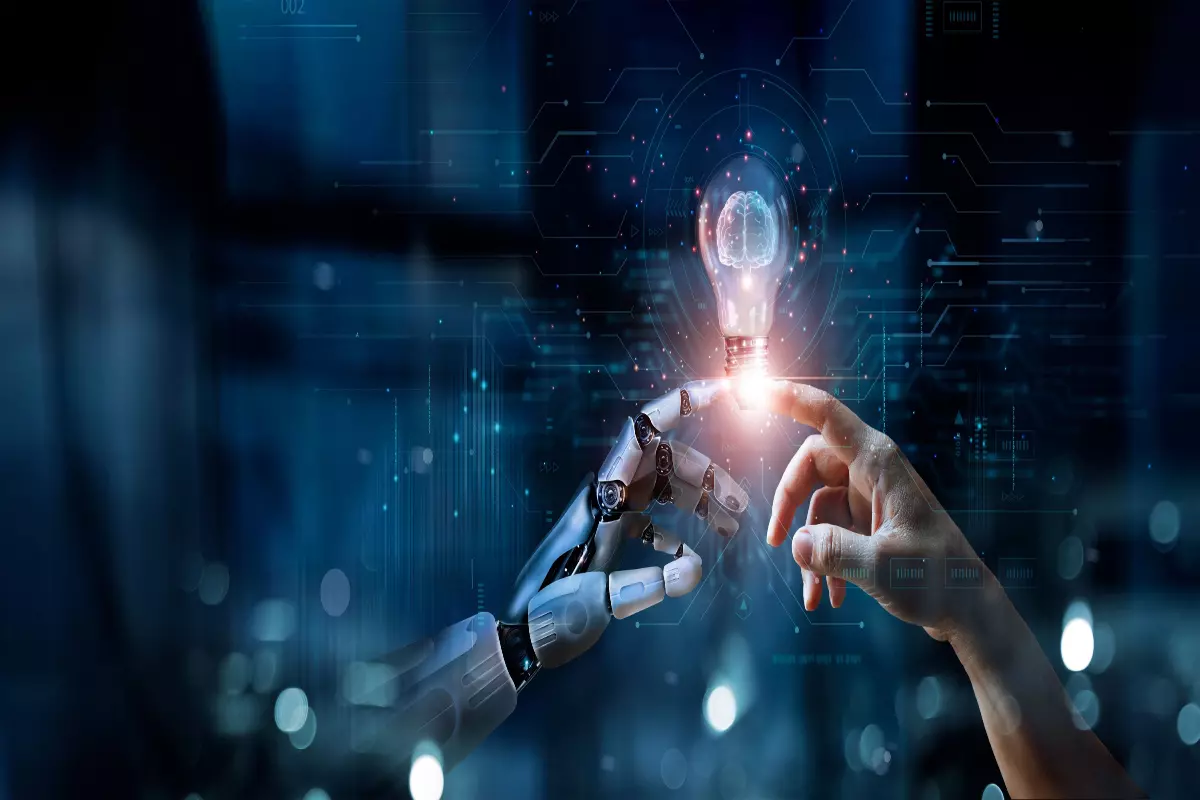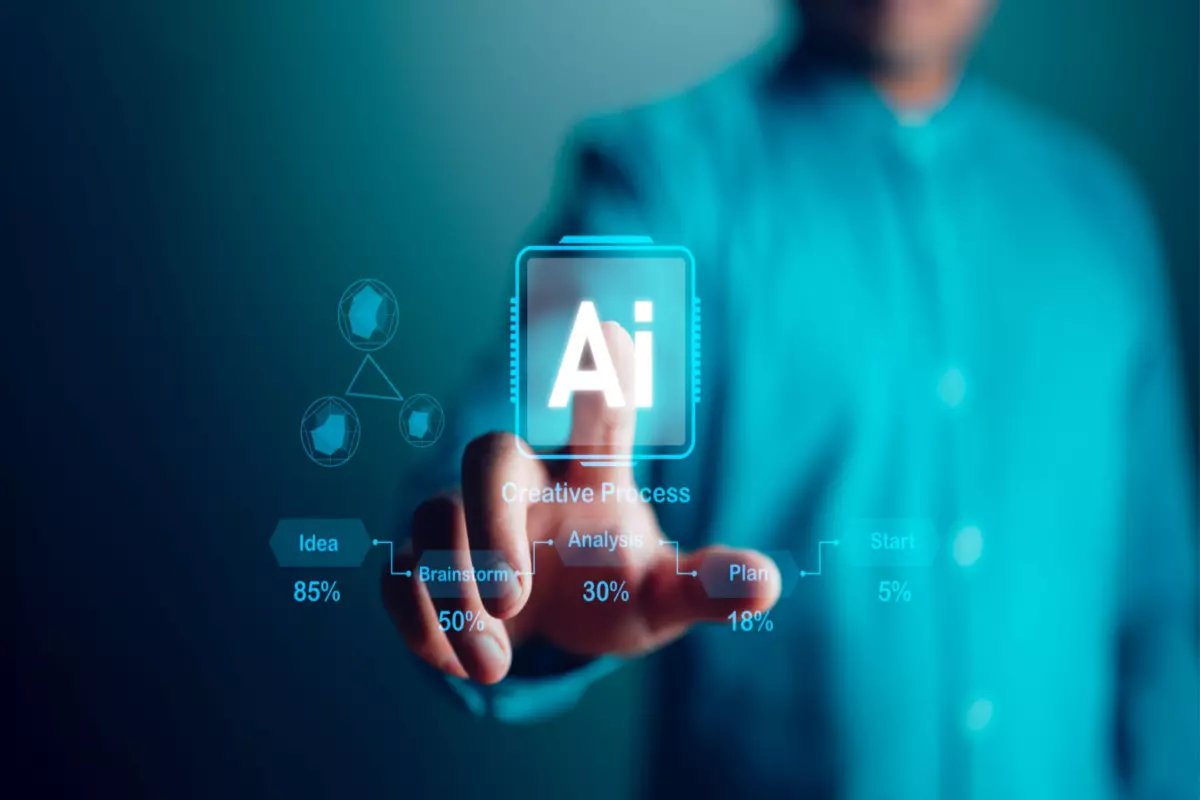Artificial Intelligence vs. Machine Learning: Unraveling Their Role in Modern Industry Applications
Have you ever found yourself pondering the difference between machine learning and AI? While often used interchangeably, these two groundbreaking fields in technology are distinctly different yet intricately linked.
AI is all about creating machines capable of thinking and acting like humans. On the other hand, ML is a specific subset of AI focused on teaching machines to learn and make decisions based on data.
In this exploration of AI vs. machine learning, we’ll uncover how these two domains intersect and diverge. If you’re interested in finding out more, read on!
What Is Artificial Intelligence?

Artificial intelligence is a branch of computer science that aims to create machines capable of intelligent behavior. In simple terms, AI is about designing computers and machines that can think, learn, and act like humans. This includes a wide range of applications, from voice assistants like Siri or Alexa to more complex systems like autonomous vehicles.
AI operates on the principle of simulating human intelligence processes by combining large amounts of data with fast, iterative processing and intelligent algorithms. This allows the software to learn automatically from patterns or features in the data.
What Is Machine Learning?
Now, let’s look at the other side of the coin in machine learning versus AI. Machine learning is a subset of AI focused explicitly on getting machines to learn from and adapt to data, making decisions with minimal human intervention. It involves creating algorithms that can receive input data and use statistical analysis to predict an output.
Think of ML as teaching a computer to perform a task, not by explicit programming, but by training it with examples. This is similar to how a child learns to recognize objects. For instance, ML powers the recommendation systems on Netflix or Amazon, where the system learns your preferences and suggests movies or products based on your past interactions.
Similarities Between Artificial Intelligence vs. Machine Learning
If you’re still wondering whether machine learning is AI or if AI and machine learning are the same, let’s set the record straight. While AI and machine learning are different, these two have many similarities. In the context of AI vs. ML, both are revolutionary disciplines in computer science, fundamentally designed to solve problems and reduce human involvement. Let’s see how these two fields overlap:
Solving Problems Like Humans
Both AI and ML excel in solving problems by mimicking human intelligence. AI achieves this through various techniques, including rule-based systems, which follow predefined rules to make decisions, and natural language processing (NLP), which allows it to understand and respond to human language.
Machine learning approaches problem-solving by using statistical methods like regression analysis or classification to enable machines to improve their performance on a specific task over time based on the data they process. This learning process is similar to how humans improve their skills through experience and feedback.
Disciplines in Computer Science
AI and ML are both deeply rooted in computer science, using algorithms and data science not only to mimic human intelligence but also to create autonomous learning systems. They go beyond replicating cognitive abilities like learning and problem-solving to independently analyzing data patterns and improving over time without human intervention. Their convergence is evident in real-world applications, such as AI’s role in natural language processing for chatbots and ML’s contribution to predictive analytics in business intelligence.
Usage in Multiple Industries
AI and ML have found applications in countless industries, revolutionizing how businesses operate. In healthcare, AI-driver tools assist pathologists in diagnosing diseases more accurately. In finance, ML algorithms are used for fraud detection and algorithmic trading. And finally, the retail sector uses AI for personalized shopping experiences, while in manufacturing, AI and ML optimize production processes.
AI vs. Machine Learning: Understanding the Differences

Now that we’ve established the similarities between these two, let’s understand the difference between AI and machine learning. Understanding the differences in their purposes, strategies, applications, and system requirements can help paint a vivid picture of their unique roles and impacts.
Purpose and Goals
AI encompasses a broader purpose by creating machines that are capable of performing tasks that typically require human intelligence. In contrast, ML has a more specific purpose: to develop algorithms that enable machines to learn from and act on data.
If we delve deeper, AI’s primary objectives are to:
- Develop systems that can reason, make decisions, and solve problems like humans.
- Create AI capable of making complex decisions in various domains.
- Automate routine and complex tasks, reducing human intervention and increasing efficiency.
- Enhance interaction between humans and machines through NLP and voice recognition.
- Enable AI systems to perform creative tasks, like composing music or generating art.
On the other hand, the main goals of machine learning include:
- Using algorithms to analyze data and make accurate predictions.
- Identifying patterns and correlations in large datasets.
- Continuously improving performance by learning from new data.
- Automatically building and refining models for complex tasks.
Strategies and Techniques
AI and ML employ different techniques to achieve their respective goals. AI incorporates rule-based decision-making, where machines follow predefined rules, and natural language processing, which allows computers to understand and respond to human language. AI also uses neural networks to stimulate human brain functions, enabling the processing of complex data patterns.
Machine learning, however, primarily relies on algorithms that learn from and make predictions based on data. This includes supervised learning, where algorithms are trained on a dataset where the outcomes are already known, and unsupervised learning, where the outcomes are unknown. ML also employs reinforcement learning, which involves training algorithms based on a system of rewards and penalties, similar to the learning process in humans and animals.
Application and Usage
AI has a broad spectrum of applications, such as in healthcare for robotic surgeries, where AI systems assist and even perform surgical procedures, in automotive for developing self-driving car technology, and in customer service for intelligent chatbots that offer instant, human-like interactions.
In contrast, ML is often employed in more specific data-intensive contexts. For instance, in healthcare, ML algorithms analyze patient data to predict the likelihood a disease develops. In sports, ML helps in optimizing athletes’ training programs and analyzing their performance.
System Requirements
Finally, AI systems require substantial computational power to process complex algorithms and large datasets needed to train and improve AI models. They also need advanced hardware like central processing units (CPUs) and graphics processing units (GPUs) capable of handling tasks like image and speech recognition.
Machine learning systems, on the other hand, put a greater emphasis on data processing capabilities. This is due to the need to manage and learn from vast amounts of data efficiently. They need specialized ML frameworks and tools like TensorFlow or PyTorch, which are open-source software libraries used to train and run complex machine-learning models.
How Companies Use AI and Machine Learning: Practical Industry Applications
From manufacturing to retail, AI and ML are being harnessed to optimize processes, enhance efficiency, and create better customer experiences. Let’s explore how these technologies are being applied in different sectors:
AI in the Manufacturing Industry
AI is revolutionizing the manufacturing industry in the following ways:
- Predictive Maintenance: AI systems predict equipment failures, reducing downtime. Siemens utilizes sensors and data analytics to monitor machinery health, significantly reducing unplanned downtime or maintenance costs.
- Quality Control: AI-driven visual inspection systems detect defects in products. For example, BMW uses AI for quality control to improve manufacturing processes and product design.
- Supply Chain Organization: Bosch leverages AI to not just predict demand and manage inventory but also to optimize logistics routes and reduce operational costs, enhancing overall supply chain efficiency.
AI and Machine Learning in Banking
Banks and financial institutions leverage AI and ML for improved security and customer service, including:
- Fraud Detection: HSBC uses AI to detect fraudulent transactions and continuously adapt to emerging fraud techniques. By analyzing transaction patterns in real-time, the system self-updates to recognize new fraudulent patterns, greatly enhancing security.
- Customer Service Bots: Bank of America’s Erica is an advanced AI chatbot that goes beyond answering queries. It provides personalized banking advice, helps in budgeting, and even alerts customers about potential savings opportunities, making banking more interactive and user-friendly.
- Credit Scoring: Lending Club utilizes ML models to transform traditional credit scoring. These models analyze a broader range of data points, providing more accurate risk assessments and tailored loan offerings, thus democratizing access to credit.
AI Applications in Health Care
Healthcare has seen significant advancements thanks to AI, with applications that include:
- Diagnostic Assistance: Google Health’s AI assists in diagnosing diseases from medical imaging with higher accuracy, leading to better patient outcomes. Its ability to analyze complex medical images quickly aids healthcare professionals in early treatment planning.
- Patient Care Optimization: AI is revolutionizing patient care by providing comprehensive and personalized treatment plans based on individual patient data. This includes continuous monitoring of health conditions using wearable devices and adjusting treatments in response to patient data in real-time.
- Personalized Medicine and Genomics: Companies like 23andMe use AI to analyze genetic data, which helps in identifying genetic predispositions to certain diseases and conditions. This allows for more personalized healthcare strategies, tailored treatments, and preventive measures based on an individual’s genetic makeup.
AI in Industrial Production
AI enhances productivity and safety in industrial production through:
- Automated Quality Control: Tesla’s integration of AI into its manufacturing processes extends to ensuring product quality. AI algorithms analyze production data in real-time, allowing for immediate corrections and enhancements, leading to higher quality.
- Energy Efficiency: AI applications in Tesla’s factories also optimize energy consumption, not only reducing costs but also supporting environmental sustainability. This involves intelligent management of resources and predictive maintenance of machinery for energy-efficient operations.
- Robotics and Automation: Fanuc’s AI-driven robots exemplify the fusion of AI and robotics, where robots are not just programmed for tasks but are capable of learning and adapting to new operations, thus increasing production flexibility and efficiency.
AI in the Online Shopping and Retail Sector
In retail, AI is key to personalizing shopping experiences and optimizing operations:
- Personalized Recommendations: Alibaba utilizes ML to analyze customer data and provide personalized recommendations. These algorithms take into account past purchases, search history, and customer preferences, resulting in highly accurate product recommendations and increased customer satisfaction.
- Stock Management: Target’s AI-driven inventory management system does more than just predict stock needs; it dynamically adjusts inventory levels based on real-time sales data, seasonal trends, and even local events, ensuring optimal stock levels and reduced waste.
- Customer Behavior Analysis: Nordstrom’s use of AI for customer behavior analysis informs its marketing strategies and affects in-store layouts and stock selections. By analyzing shopping patterns, Nordstrom can tailor its store environments to enhance customer experiences and drive sales.
Sum Up
In our exploration of AI vs. machine learning, it’s clear that these technologies are intertwined, yet they serve different purposes if you dig deeper. AI, with its broad capabilities, is reshaping what machines can achieve, while ML, as a key subset of AI, is refining how machines learn from data to make intelligent decisions.
As we witness their growing influence across various industries, from healthcare to retail, it’s evident that AI and ML will continue to be pivotal in driving future innovations.
Try our real-time predictive modeling engine and create your first custom model in five minutes – no coding necessary!
- Fully operational AI with automated model building and deployment
- Data preprocessing and analysis tools
- Custom modeling solutions
- Actionable analytics
- A personalized approach to real-time decision making
Table of Contents
- What Is Artificial Intelligence?
- What Is Machine Learning?
- Similarities Between Artificial Intelligence vs. Machine Learning
- Solving Problems Like Humans
- Disciplines in Computer Science
- Usage in Multiple Industries
- AI vs. Machine Learning: Understanding the Differences
- Purpose and Goals
- Strategies and Techniques
- Application and Usage
- System Requirements
- How Companies Use AI and Machine Learning: Practical Industry Applications
- AI in the Manufacturing Industry
- AI and Machine Learning in Banking
- AI Applications in Health Care
- AI in Industrial Production
- AI in the Online Shopping and Retail Sector
- Sum Up



